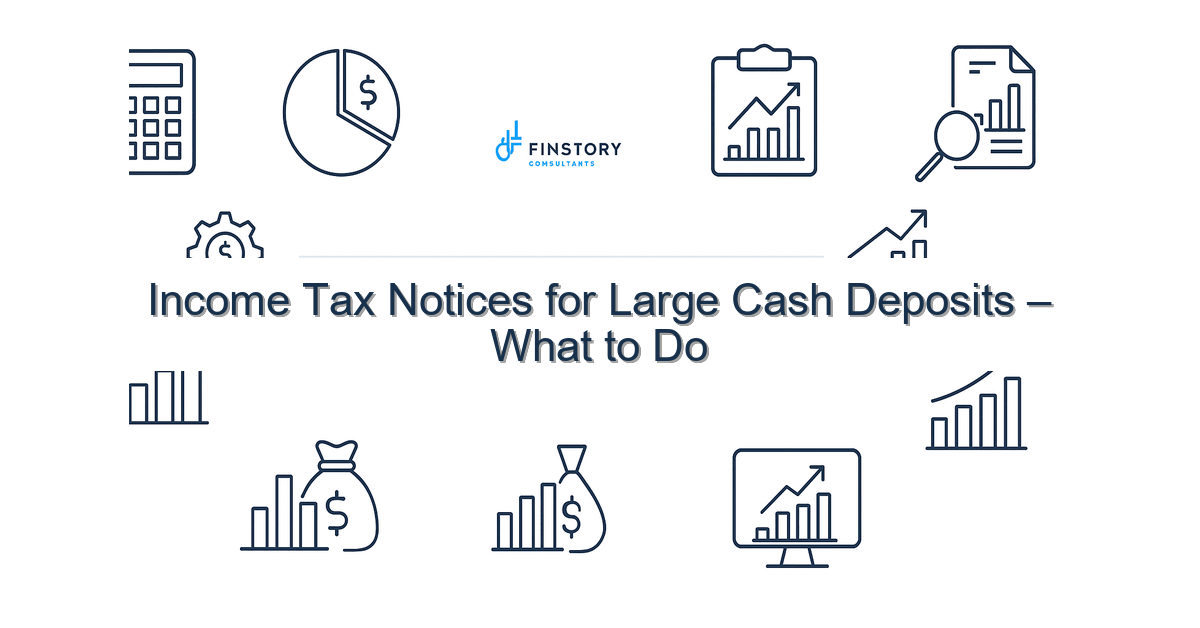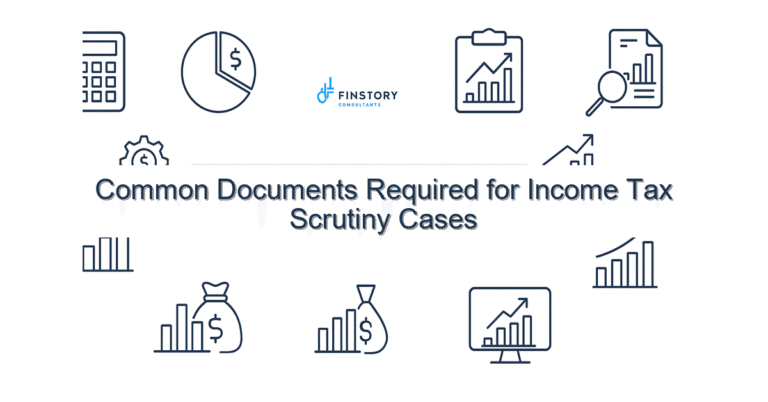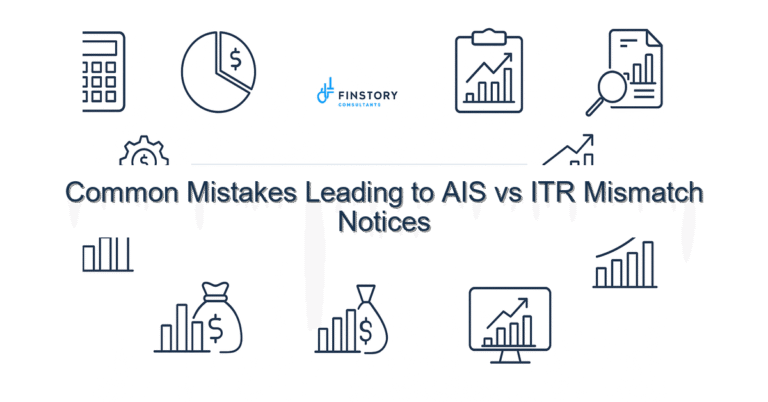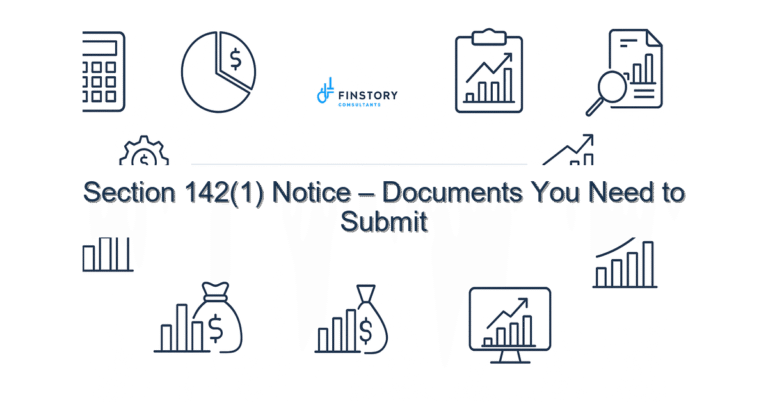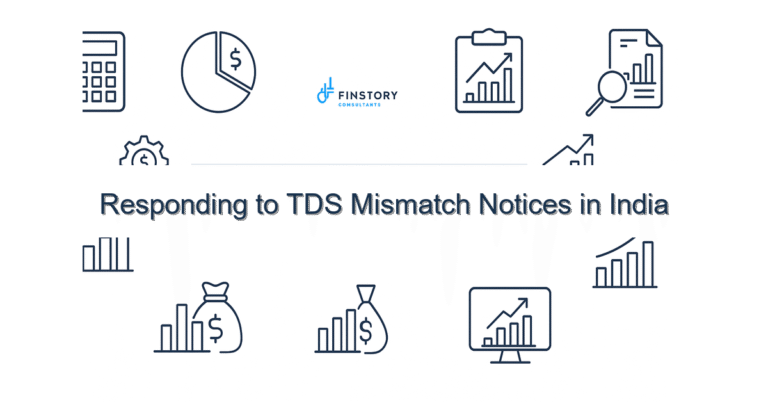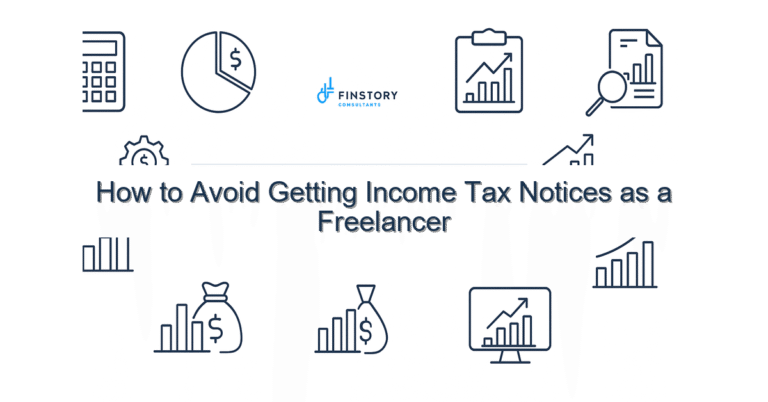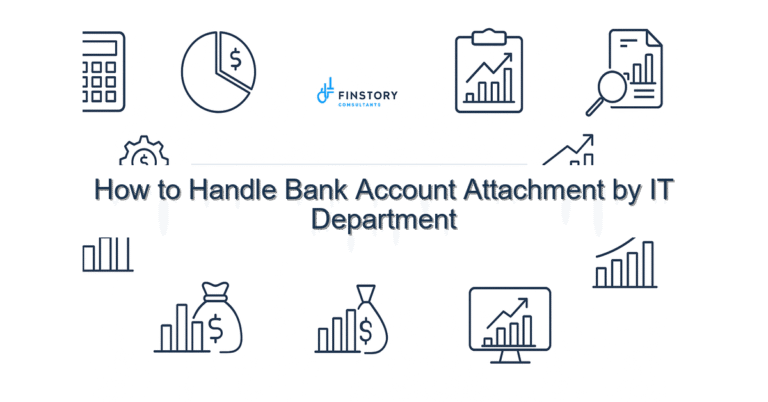Income Tax Notices for Large Cash Deposits – What to Do
Getting an income tax notice about large cash deposits can feel shocking and personal. You may worry about penalties, questions from banks, or damage to your business reputation. You’re not alone — many salaried taxpayers, professionals, founders and MSMEs face this and want a calm, practical plan.
Summary: The key takeaway: don’t ignore the notice. Understand the allegation, gather documentary evidence (bank statements, source proofs, sale deeds, receipts), reconcile with AIS/26AS and Form 26, prepare a concise written response and—if needed—seek a professional review to avoid penalties and frozen accounts.
What’s the real problem in India?
Large cash deposits frequently trigger automated flags in income tax india systems and banking compliance units. The Central Board of Direct Taxes (CBDT) and banks compare deposits to reported income (AY/PY mismatches), TDS/TCS records and AIS/26AS. Notices can arrive under sections like 142(1), 143(2), or through a summary mismatch letter asking for source of unexplained credits. Timelines are strict: some notices require responses within 15–30 days, and follow-up assessments or penalties can be imposed if you don’t respond properly.
- Symptom: Unexpected notice citing “unexplained cash credits” or “income escaping assessment.”
- Symptom: Bank asks for source proof or freezes a suspicious transaction.
- Symptom: Discrepancy between cash deposits and AIS/26AS or ITR figures for that AY/PY.
- Symptom: Multiple notices following a large deposit or sale with cash component.
What people get wrong
Common pitfalls make a small issue escalate: treating notices like spam, sending incomplete proofs, or assuming verbal bank confirmations are enough. Others blur personal and business cash flows, fail to update books, or miss cross-links between TDS/TCS and Form 26AS. Some taxpayers assume old safe-harbour thresholds still apply or rely on casual affidavits instead of documentary evidence.
- Ignoring the notice until escalation or penalty.
- Submitting unclear statements without vouchers, invoices, or bank reconciliation.
- Not checking AIS/26AS and TDS/TCS entries before responding.
- Mixing deposits from business and personal accounts without proper bookkeeping.
A better approach
Respond early, document everything, and use a stepwise framework that works for salaried individuals, professionals, MSMEs and founders.
- Read the notice carefully: note the assessment year (AY), period (PY), specific amount and the section under which the notice is issued.
- Reconcile records: pull bank statements, cash books, sale deeds, rental agreements, invoices, and check AIS/26AS and Form 26 for TDS/TCS entries.
- Prepare evidence: invoices, bills, stamped receipts, loan sanction letters, or sale agreement showing payment mode. If it’s a loan, attach loan docs and repayment schedule.
- Draft a concise response: address each point, attach reconciliations and a cover letter. If you need more time, file a provisional reply asking for an extension with reasons.
- Escalate to a tax professional: get representation for hearings or if an assessment notice follows.
Real-world example: An Ahmedabad trader received a 143(2) notice for Rs 12 lakh cash deposited in one year. After reconciling, he supplied sales bills, contemporaneous cash receipts and a VAT return that matched the deposits — the ITO dropped the addition and no penalty was levied.
Quick implementation checklist
- Open the notice and note the response deadline and section mentioned.
- Download bank statements for the period in question and highlight the deposits listed.
- Pull your AIS/26AS and reconcile TDS/TCS entries with bank credits.
- Collect source documents: invoices, sale deeds, rent receipts, gift deeds, loan papers or documented employer reimbursements.
- Prepare a one-page reconciliation: deposit amount vs. source itemized with attached evidence.
- Draft a cover letter addressing the tax officer’s queries; attach reconciliations and proofs.
- Submit response via the e-filing portal or physical submission as directed; retain proof of delivery.
- If uncertain, schedule a tax consult—early help often reduces assessments and penalties.
- Review ITR: ensure you have claimed legitimate deductions (Section 80C limit, home loan interest) and used correct regime (new vs old regime slabs) that best suits you.
- Update bookkeeping and institute a policy to record cash receipts with serialised receipts going forward.
What success looks like
- Reduction or withdrawal of proposed income additions (0–100% drop depending on evidence).
- Lower or no penalty imposed after credible response (penalty avoidance rate improves).
- Fewer follow-up notices for the same AY/PY: better record reconciliation reduces repeat queries.
- Faster processing of refund claims and ITR approvals when AIS/26AS matches your return entries.
- Improved bank relationships and fewer compliance flags on future large transactions.
Risks & how to manage them
Not responding or responding poorly can lead to additions, penalties under sections 271(1)(c), or even prosecution in extreme concealed income cases. To manage risk:
- Act immediately on the notice; time limits matter for appeals and revisions.
- Preserve contemporaneous evidence — retrospective affidavits have less weight.
- Use registered delivery or e-filing acknowledgments for submissions.
- If large cash deposits are regular in business, consider switching to traceable collection modes (cheque, bank transfer) and strengthen GST/Bookkeeping.
Tools & data
Use these India-specific tools to build your response:
- AIS/26AS: Verify TDS/TCS and mismatch points before responding.
- Income Tax e-filing portal: submit responses/objections and download notice history.
- Bank statements and bank reconciliation tools (Tally, QuickBooks or spreadsheet templates).
- TDS/TCS tracking tools and GST returns to link transactional evidence.
- Property registers, sale deed scans, loan ledgers and receipts for capital gains indexation evidence where applicable.
FAQs
Q: I deposited cash given by family—do I need to explain?
A: Yes. Gift from relatives is exempt but must be documented with a gift deed or bank transfer evidence. Attach identity and relationship proof to avoid disputes.
Q: Will a notice affect my ITR filing last date or refunds?
A: A notice doesn’t change the ITR filing last date but unresolved notices can delay refund processing. Reconcile AIS/26AS before filing to reduce future mismatches.
Q: How do TDS/TCS mismatches show up?
A: If the payer deducts TDS/TCS but it’s not reflected in your AIS/26AS or you haven’t declared the receipt, notices can follow. Correct with Form 26AS and communicate with the deductor.
Q: Can cash sale of property be justified?
A: Sale proceeds must be supported by sale deed and consideration declared in ITR; capital gains must be computed with capital gains indexation where applicable. Large unaccounted cash raises red flags.
Next steps
If you’ve received a notice, collect the documents listed in the checklist and reach out. Early professional review reduces risk and often stops assessments in their tracks. For guidance on reconciling AIS/26AS, crafting responses under 143(2) or handling TDS/TCS mismatches, we can help.
Work with Finstory. Speak with an Expert for a personalised plan to reduce your tax outgo and stay compliant. Book a free 20-min consultation.
Need immediate help? Check our practical resources to prepare before the consultation. Remember, a well-documented response today prevents trouble tomorrow.
📞 Need help with Income Tax in India?
Book a 20-min consultation with our tax team. Individuals, founders & MSMEs welcome.
Prefer email or phone? Write to info@finstory.net
or call +91 44-45811170.
